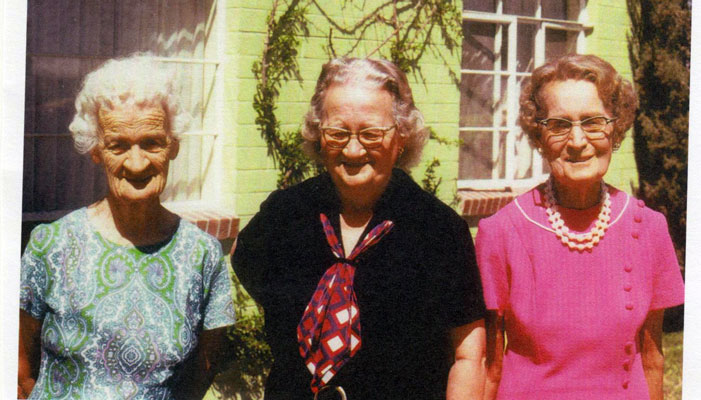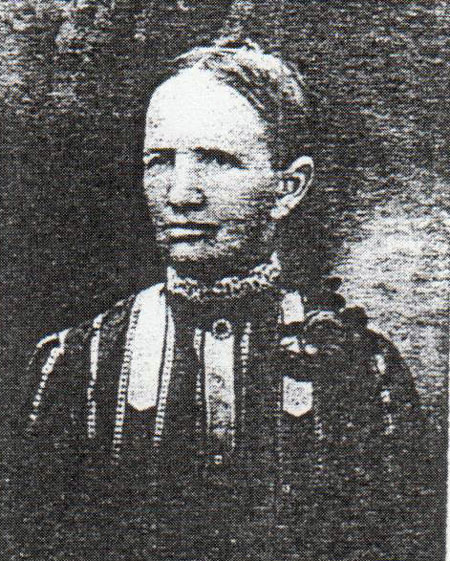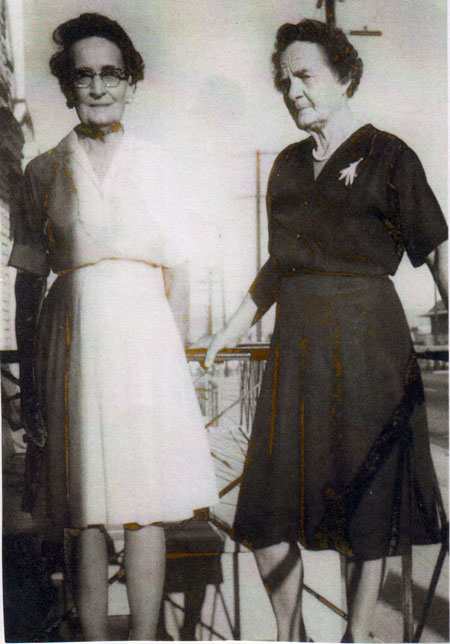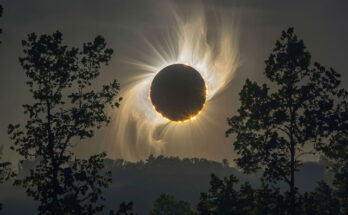Contributed Photo: Pictured are, from left, Hilma Lamb, Beatrice Myers, and Hilda Taylor.
Column By Edres Bryant Barney
Santaquin, Sevier, Utah was the setting for the birth of Hannah Helena Roseberry and her twin, Charles Lewis on 2 October 1861 to Helena Erickson and Carl Nils Roseberry. They were the second set of twins born to this couple – the first twins of the family to be born in America, having recently arrived from Sweden. A set of triplets came three years later with the surviving one being Louisa Christina who grew up and was married to Joseph Knight Rogers.
These children grew up fatherless as Carl Roseberry was killed in a railroad accident in November 1868 in Weber Canyon. In 1878 after much suffering and trials, the Roseberry family left Utah with a company of saints for Arizona. George Larsen was a member of this group, having been asked to drive a wagon for a widow lady, Mrs. Peterson, with a family of small children, none old enough to drive. They were about five months to get to Snowflake.
Hannah and George had been seeing one another and the trip enhanced that attraction. Soon after arriving in Arizona, they returned to Utah, accompanied by Hannah’s mother, where they were married in the St. George Temple on Nov. 6, 1878, then, due to the cold weather, spent the winter there.
After returning to Snowflake and staying about a year they came on down to the Gila, arriving in May 1880 where they found eight families living in Smithville (later named Pima) in a few stockade-type houses in the mesquite thicket.
George Larsen was born on Sept. 12, 1848, in Fallealeu, Halbeck, Denmark, coming to this country between the ages of 10 and 12; the remainder of his growing up in Utah. Roseberry and George went right to work helping clear the mesquite and making a safe, attractive community as well as a productive one. George and Joe Roseberry did some freighting, but mostly they farmed. He kept his home and farm looking nice. George was well liked — noted for his generous nature; always willing to share his meat and produce with the town’s widows. He also cut and hauled firewood to those in need. As did all the early pioneers, George and Hannah wanted their children to receive as much education as possible. They were also taught to work hard and to be kind.
In July and August 1907, six of the children had measles, and Hannah “overdone” caring for them, brought on a heart attack after having experienced heart problems for years. She suffered a second attack, which caused her death on Oct. 1, 1907.
George always had beautiful horses. In November 1908 he sold a matched team to the Globe Fire Department and Sam delivered them to Globe.
On June 6, 1910, George passed on, leaving a nice farm and home to his children, two having died in infancy. The oldest, Sam, took over the farm with his own 50 acres which his parents had given him.
Mary goes on to say, “I just want to say this before closing, how I wish everyone could have known Aunt Louisa Rogers. She was so kind and good-natured, so jolly, big-hearted, and always had something good to say about everyone. She was certainly good to us children when we were left alone. She would come to our home and help us with our canning and showed us how to do so many things, which was a big help to us. Of course, Aunt Louisa was always good to us as she was to everyone — and everyone loved her. I’m proud that she was our Aunt Louisa and we loved her and enjoyed going to her home to visit with her.”
Ed and Hilda lived out their lives on the farm George and Hannah left for their children — raising their children there. Ed and Hilda’s daughter, Bea, and her husband, Allen Powell, built their home just a few hundred feet west of the original home. This was a great example of how people worked together — helping each other. This pioneer couple, along with so many others helped make this community what it became — a wonderful place to grow up and raise their families. Larsen is also known as Larson in some family records.
The story continues with memories of the older daughter, Mary Larson Owens (married to Oance): “Sam was married in March 1913, so us six children lived by ourselves. My brothers and sisters were the best children that ever was; no trouble to anyone. We just tried to be good and kind to each other. About two years after Sam’s marriage, Hilda married Edwin Taylor and he took over the farm with Joe’s help. Hilma and I were working away from home, helping other families with housework. Hilda took care of the younger children which were Joe, Beatrice, and Bill. Joe passed away on Nov. 18, 1931, at Hilda and Ed’s home.”
Special thanks to Susan Powell Bingham and Mary Larson Owens for the information for this story and to Bea Taylor Powell for the photos. This and other individual and family histories may be found at the Eastern Arizona Museum in Pima. Hours are Thursday – Saturday, 10 a.m. to 3 p.m.










